- TOP
- Search Criteria
- A First-timer's Guide to Shinjuku's Golden Gai
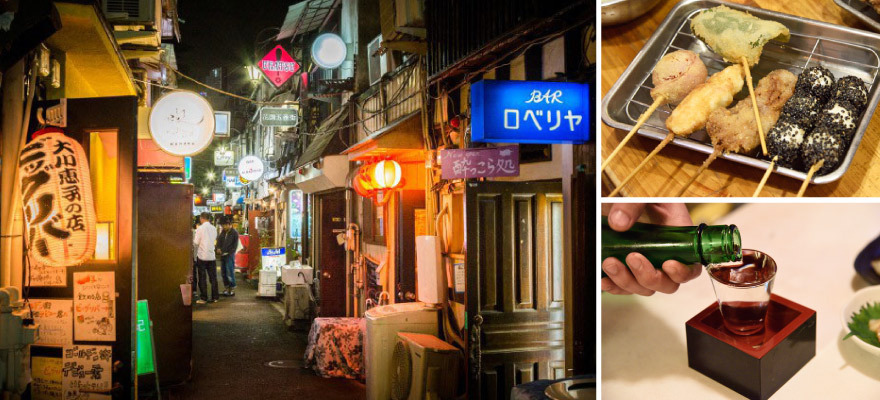
STORY
A First-timer's Guide to Shinjuku's Golden Gai
- SHINJUKU
- TOKYO
- DINING
- SIGHTSEEING
- SPECIAL
- SHINJUKU_GOLDEN_GAI
- OMOIDE_YOKOCHO
- YOKOCHO
- ALCOHOL/LIQUOR
- SAKE
- NIHONSHU
- IZAKAYA
Golden Gai is said to have started around 1950 when the black market that had arisen in front of Shinjuku Station moved and, in this new area, a number of eating and drinking establishments set up shop. Although Shinjuku has undergone considerable modernization since then, Golden Gai seems to have remained largely unchanged.
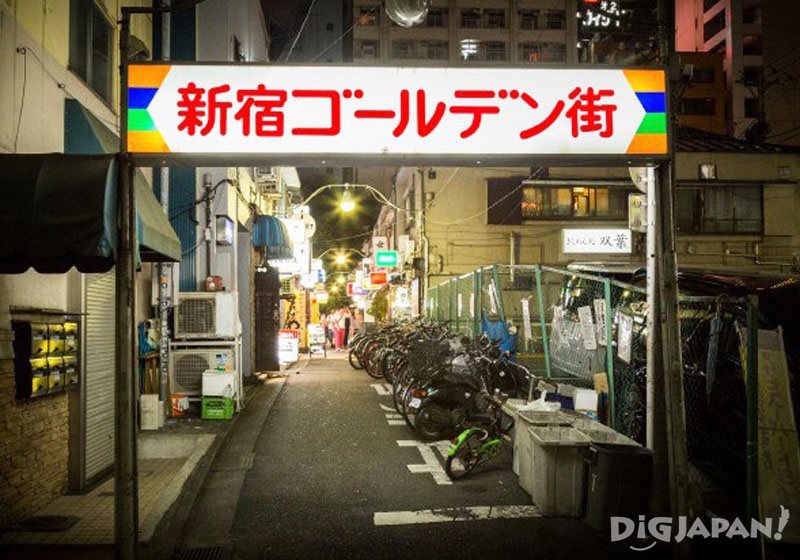
The alley is narrow and cramped with countless signs advertising the various establishments that line the way. Many of the buildings themselves are made of wood, remnants hanging on from the Showa Era. Most measure only around thirteen square meters (one hundred forty-two square feet). It's a dim, boisterous place filled with the aromatic smoke of grilling meats. Yet despite the nearly endless number of slick new restaurants available in Shinjuku, this little alley continues to draw the attention of foreign tourists. Golden Gai is a popular “un-touristy” tourist spot.
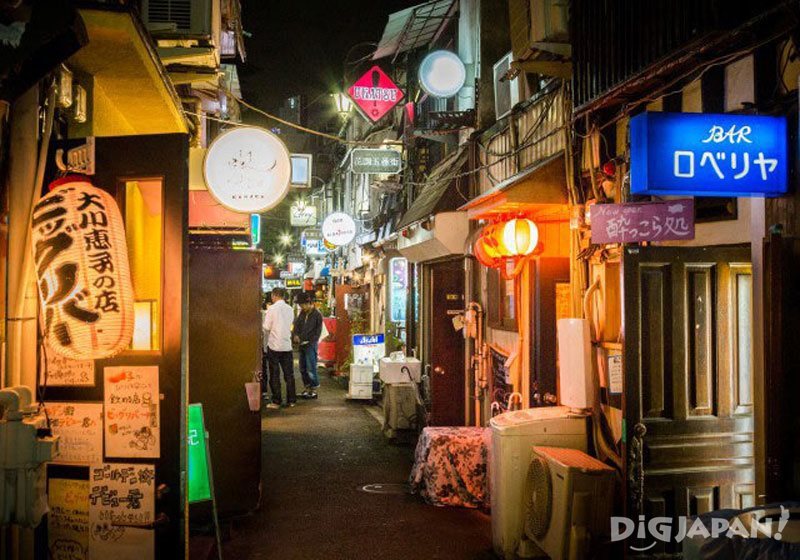
For that reason, walking into one of these tiny restaurants can be a little intimidating, especially if you can't speak Japanese. So if you're looking for places that are “beginner friendly” for your first Golden Gai adventure, check out these three spots.
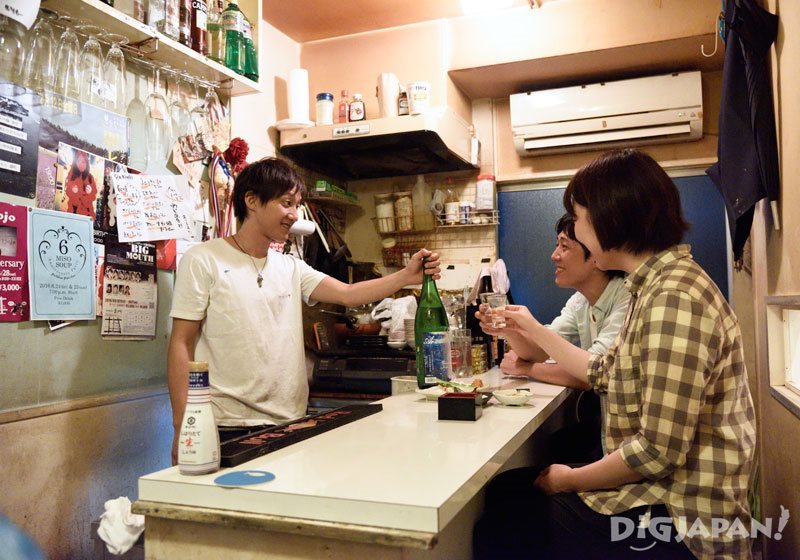
Because the restaurant purchases their nihonshu directly from breweries, they're able to stock some selections that are sometimes unusual even for Japanese patrons. The staff is more than happy to help you find a drink that you like, so go ahead and ask. Or, you can trust the bartender’s instinct and order the daily special. Imbibe here for 600 yen per drink (300 yen for soft drinks).
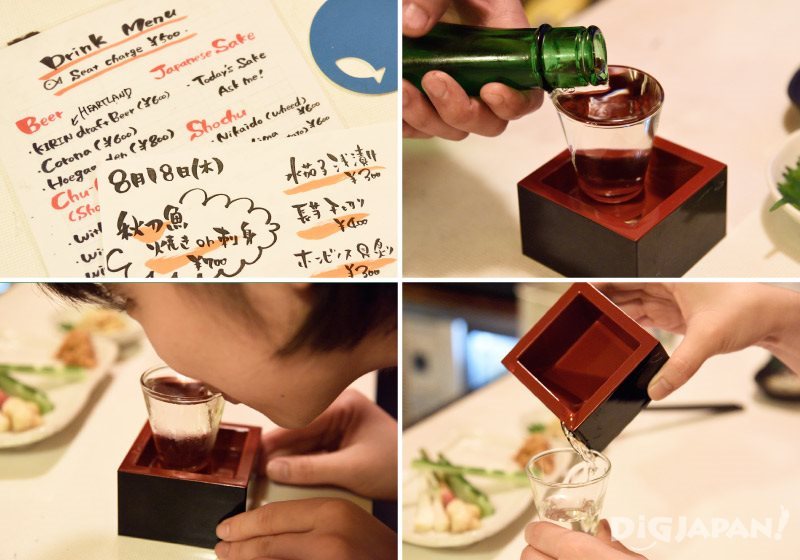
To go along with the nihonshu, totobar Shinjuku offers a selection of seasonal seafood provided by a fishmonger who’s friends with the restaurant staff. While the menu changes daily, you can expect that about ten options will be available from grilled fish to sashimi. If you really want to enjoy your nihonshu in Japanese style, order some saba no shioyaki (salt-grilled mackerel) to go with it.
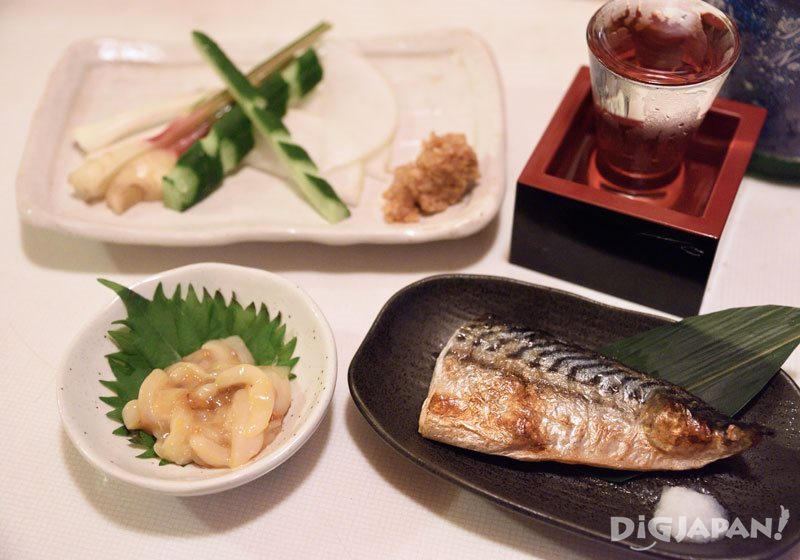
Address: 3-ban gai dori 2F
1-1-9 Kabuki-cho, Shinjuku-ku, Tokyo
Hours: 8:00pm~5:00am
*Hours are subject to change depending on the day
Access: 5 min walk from the East Exit of JR Shinjuku Station
Notes About This Restaurant
・In place of a table or cover charge, this restaurant serves its diners what's called an otoshi. This costs 500 yen. As this is in place of the table charge, you cannot decline it.
・Please be careful leaving the restaurant as the stairs are extremely narrow.
・The staff asks that patrons please drink in moderation
・Credit cards are not accepted
・Smoking is permitted in the restaurant
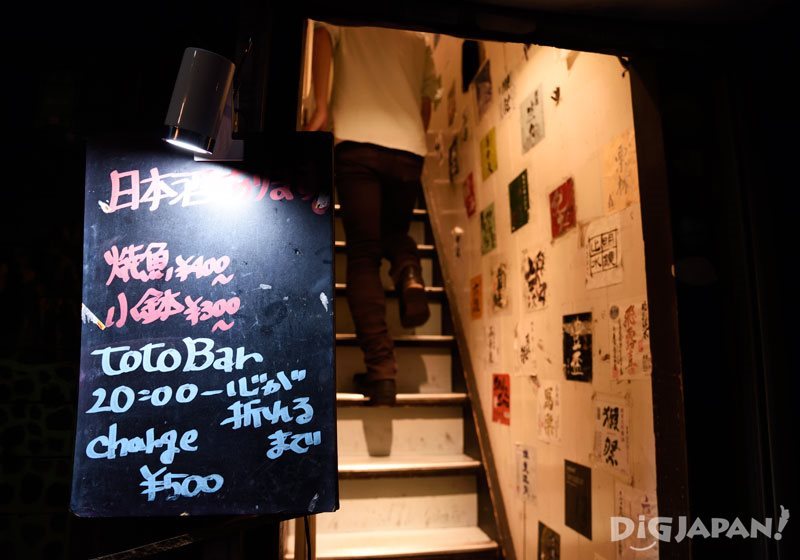

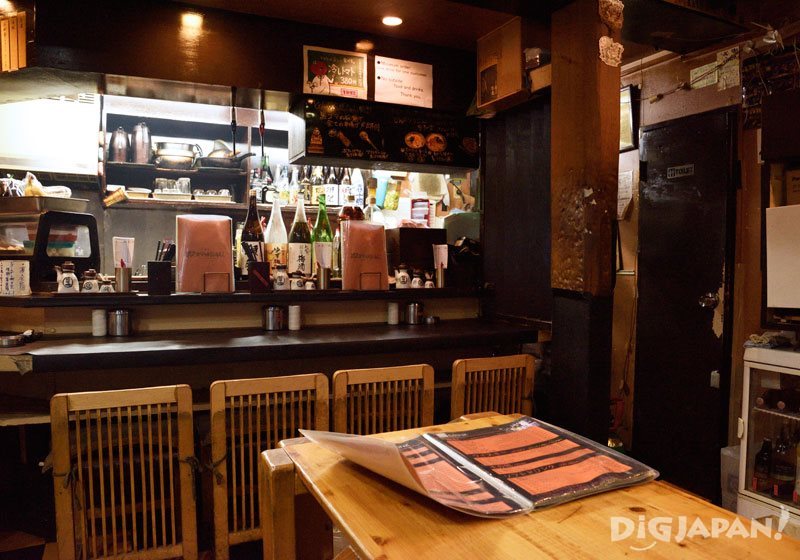
Kushiage refers to meats and vegetables that are threaded onto skewers, breaded, and deep fried. As it's a fried food, this kind of meal goes great with an ice cold beer or high ball. Kushiage Dongara-Gassyan serves 40 varieties of kushiage such as standards like beef and chicken, and some more unusual options such as “tomato corn” and spam. Also, you can ask to have your kushiage breaded with black sesame seeds instead of the typical panko bread crumbs. These fragrant seeds go particularly well with vegetables or quail eggs. The price per kushiage ranges from 80 to 260 yen, and it costs an additional 20 yen to substitute the regular breading for sesame seeds.
The other must-try item on the menu here is the kara age-- Japanese-style fried chicken. They marinate their chicken with rice mold to get it super tender and then dress it in a soy-based tare sauce that's out of this world.
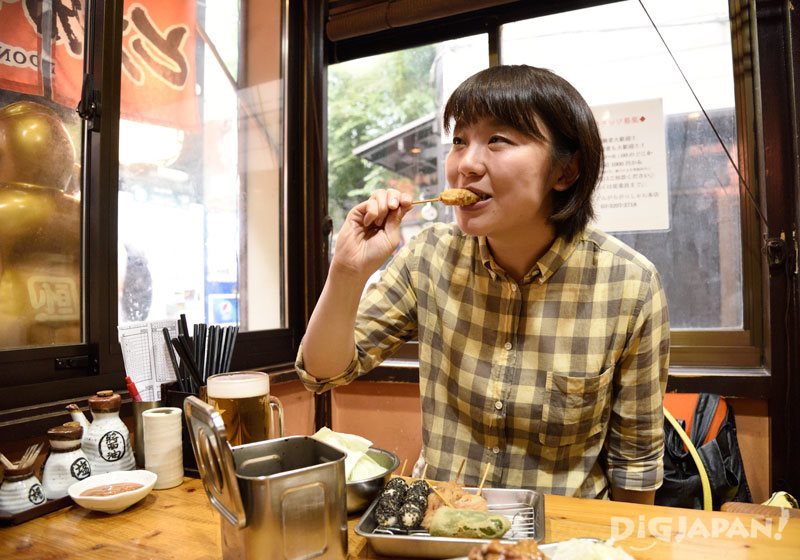
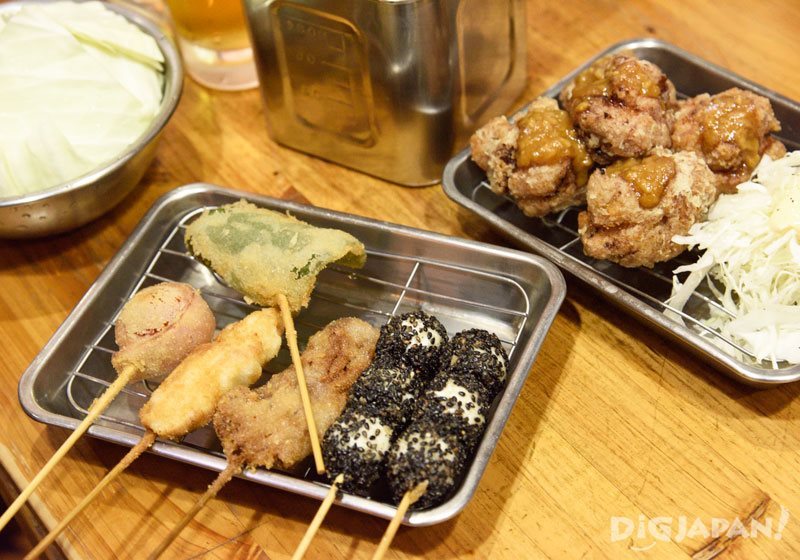
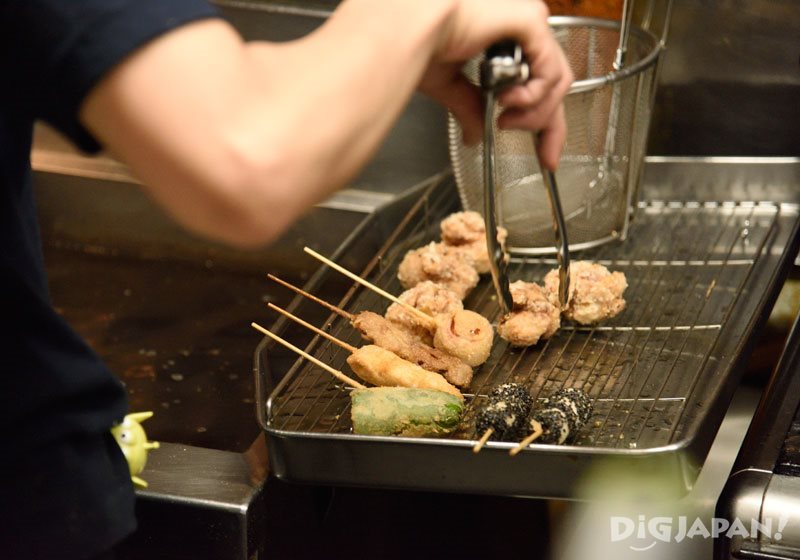
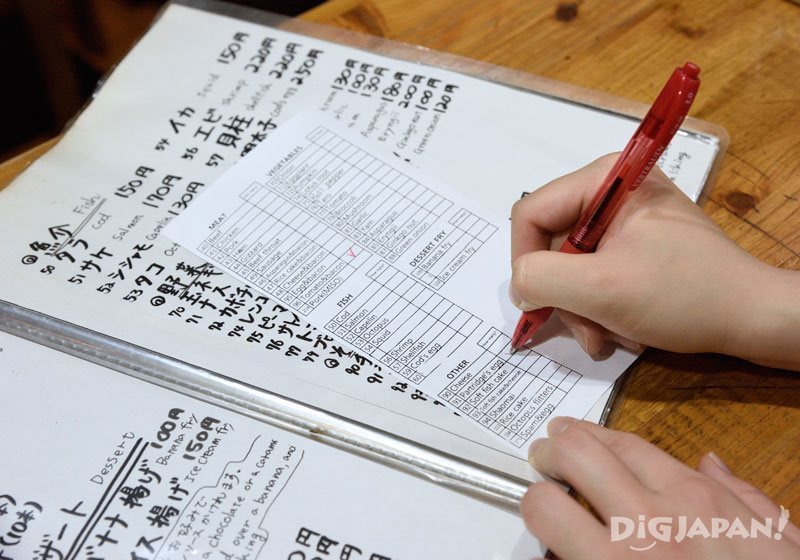
One of the most delicious ways to enjoy kushiage is to dip it in sauce before eating. However, rather than give guests their own individual dipping sauces, the restaurant keeps pots of sauce on the table for guests to share as is typical in kushiage restaurants. This is why you must not for any reason give into the temptation to double dip your kushiage.

The pictures above show how to properly dip your kushiage in the sauce. If you desperately need more sauce for your kushiage but have already taken a bite, use a cabbage leaf like a spoon and pour some more on. One last point: place the skewer in the holder once you've finished your kushiage.
Address: Maneki-dori 1F
1-1-9 Kabuki-cho, Shinjuku-ku, Tokyo
Hours:
Mon. thru Fri. 12:00pm~5:00am (L.O. 4:00am)
Weekends and holidays 5:00pm~2:00am (L.O. 1:00am)
Access: 5 min walk from the East Exit of Shinjuku Station
Notes About This Restaurant
・There's no cover or table charge
・Each guest must order one drink
・No double dipping in the sauce!
・Credit cards OK(3,000 yen~)
・Smoking is permitted in the restaurant
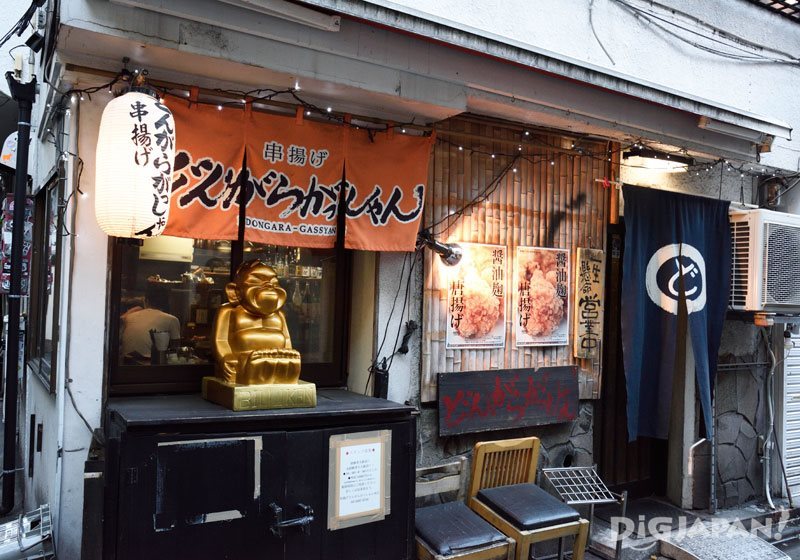
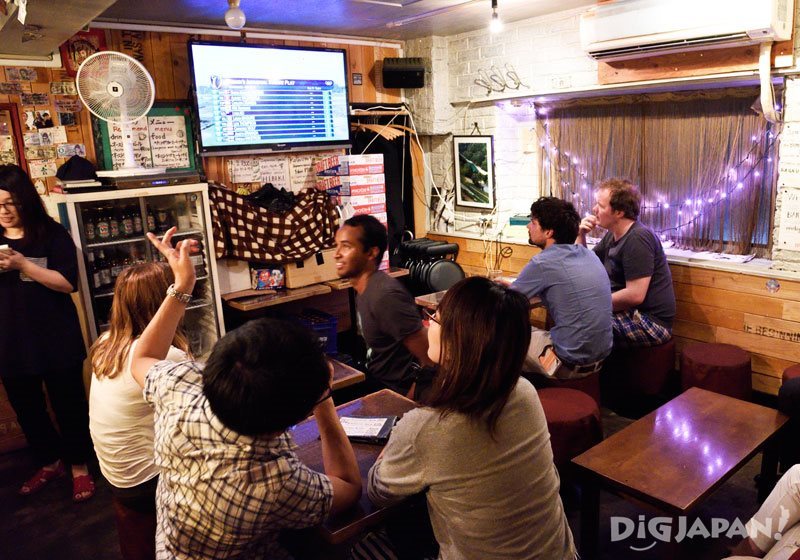
If you're not sure what to order, go with one of the bar's original drinks like their Green Tea Fizz made with sencha green tea, lemon juice, and soda water (800 yen).
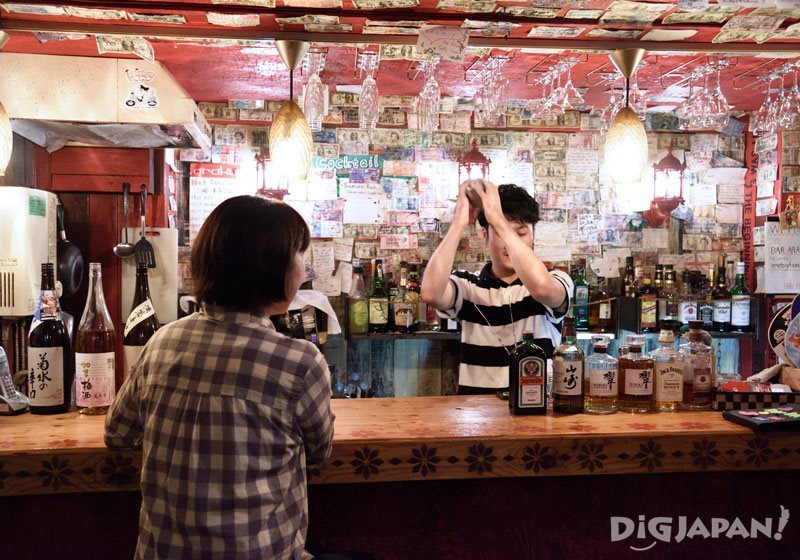
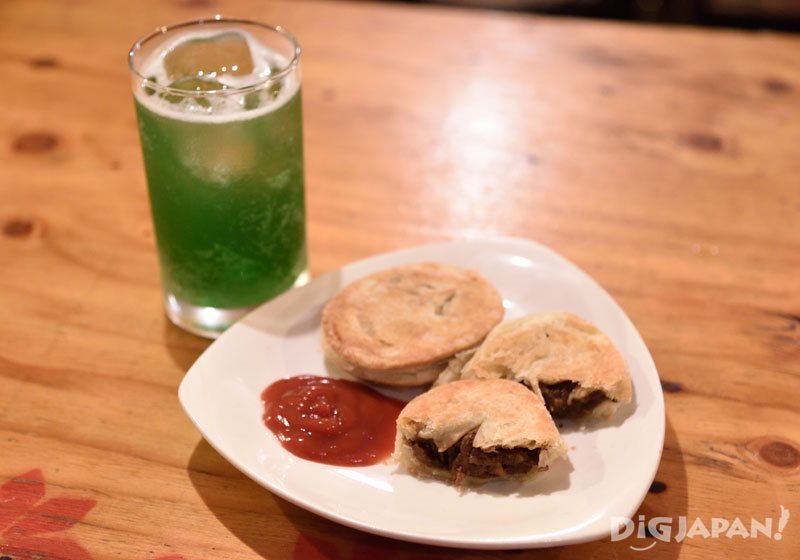
The other cool thing about this bar is that the walls are covered with messages left behind by travelers over the years. If you check with the staff in advance, you can leave a message of your own.
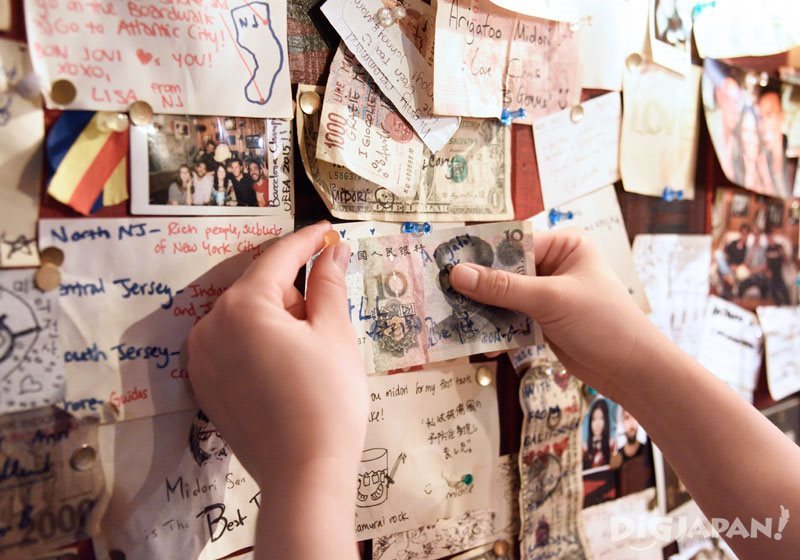

Address: Shinjuku Golden-Gai G2-dori 2F
1-1-9 Kabuki-cho, Shinjuku-ku, Tokyo
Hours:
Sun. thru Thur.: 8:00pm~4:00am (L.O. 3:30am)
Fri. and Sat.: 8:00pm~5:00am (L.O. 4:30am)
Access: 5 min walk from the East Exit of Shinjuku Station
Notes about this restaurant
・No cover charge for international guests (700 yen for Japanese)
・All-you-can-eat snacks
・Minimum one drink order per person
・Credit cards not accepted
・Smoking is permitted in the restaurant
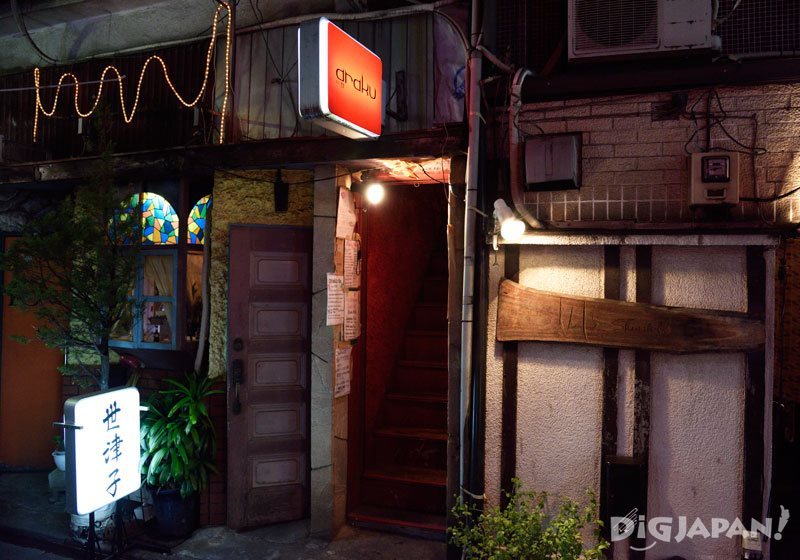
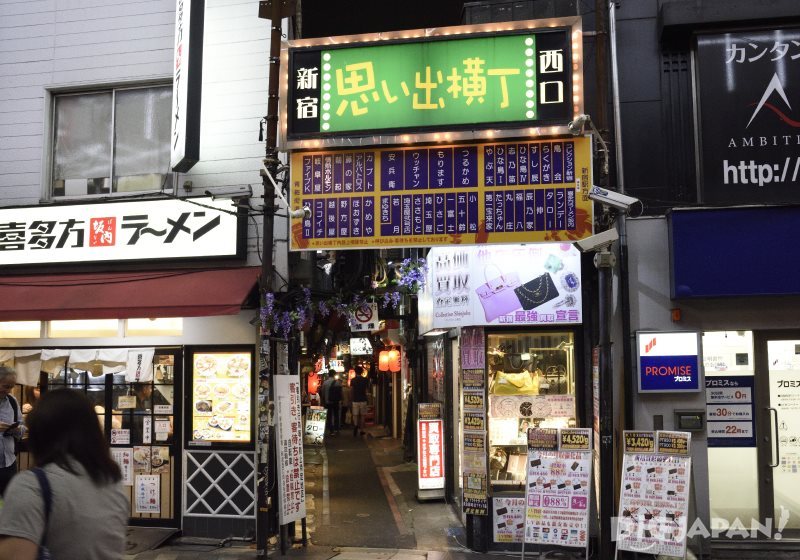
If you're up for more yokocho adventures, Omoide Yokocho is waiting for you by the West Exit of Shinjuku Station. This place has a few nicknames including "salary man's paradise" and akachochin, which refers to the red (aka) lanterns (chochin) that hang outside of many of the restaurants.
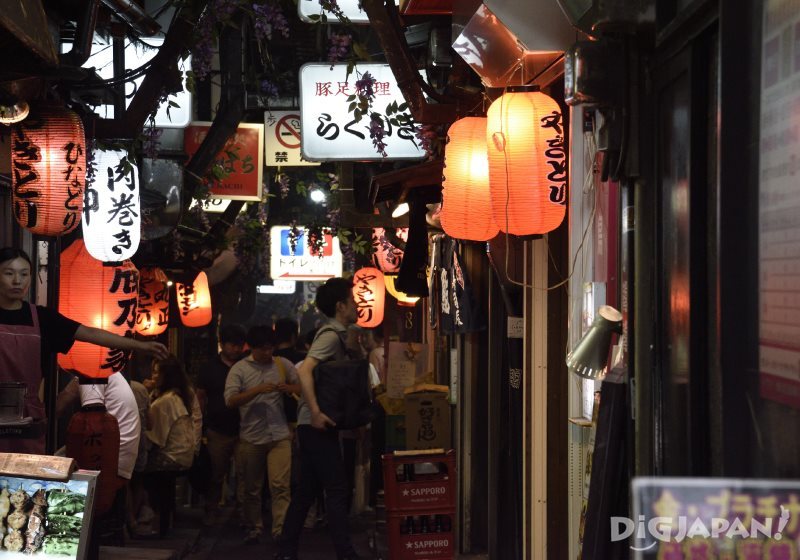
Address: around 7-13-12 Nishi Shinjuku, Shinjuku-ku, Tokyo
Hours of operation and closings depend on the restaurant.
Access: right outside of the West Exit of JR Shinjuku Station
Have you ever been to Golden Gai? Have any izakaya or bars there you'd recommend? Let us know in the comments!

The alley is narrow and cramped with countless signs advertising the various establishments that line the way. Many of the buildings themselves are made of wood, remnants hanging on from the Showa Era. Most measure only around thirteen square meters (one hundred forty-two square feet). It's a dim, boisterous place filled with the aromatic smoke of grilling meats. Yet despite the nearly endless number of slick new restaurants available in Shinjuku, this little alley continues to draw the attention of foreign tourists. Golden Gai is a popular “un-touristy” tourist spot.

For that reason, walking into one of these tiny restaurants can be a little intimidating, especially if you can't speak Japanese. So if you're looking for places that are “beginner friendly” for your first Golden Gai adventure, check out these three spots.
totobar Shinjuku
If you’re interested in exploring the world of nihonshu or “sake” as it's commonly called abroad, try totobar Shinjuku. This tiny restaurant may only have ten counter seats, but they typically stock ten to twelve different nihonshu at a time.
Slightly cramped seating is definitely one of the appeals of eating out in Golden Gai.
Because the restaurant purchases their nihonshu directly from breweries, they're able to stock some selections that are sometimes unusual even for Japanese patrons. The staff is more than happy to help you find a drink that you like, so go ahead and ask. Or, you can trust the bartender’s instinct and order the daily special. Imbibe here for 600 yen per drink (300 yen for soft drinks).

The English menu (top left) and how to drink nihonshu mokkiri-style.
While here, try drinking your nihonshu in a style known as mokkiri. The bartender will place a small glass inside a wooden box called a masu. Next, the bartender will pour the nihonshu of your choice into the glass, letting it overflow into the masu below until it, too, seems just about ready to spill over. Take your first few sips from the glass without picking it up. Once you've drunk about half the glass, you can take it out and pour the nihonshu from the masu into it. Drinking directly from the masu is fine, too. To go along with the nihonshu, totobar Shinjuku offers a selection of seasonal seafood provided by a fishmonger who’s friends with the restaurant staff. While the menu changes daily, you can expect that about ten options will be available from grilled fish to sashimi. If you really want to enjoy your nihonshu in Japanese style, order some saba no shioyaki (salt-grilled mackerel) to go with it.

Enjoy!
Information
totobar Shinjuku | totobar 新宿Address: 3-ban gai dori 2F
1-1-9 Kabuki-cho, Shinjuku-ku, Tokyo
Hours: 8:00pm~5:00am
*Hours are subject to change depending on the day
Access: 5 min walk from the East Exit of JR Shinjuku Station
Notes About This Restaurant
・In place of a table or cover charge, this restaurant serves its diners what's called an otoshi. This costs 500 yen. As this is in place of the table charge, you cannot decline it.
・Please be careful leaving the restaurant as the stairs are extremely narrow.
・The staff asks that patrons please drink in moderation
・Credit cards are not accepted
・Smoking is permitted in the restaurant

Kushiage Dongara-Gassyan
For a taste of Osaka in Tokyo, head to Kushiage Dongara-Gassyan. This restaurant serves kushiage, which is considered one of the specialties of Osaka.
You'll find an interesting fellow waiting for you outside of the restaurant: the Billiken. It's said that you can get good luck if you rub the bottoms of its feet.

The restaurant has a total of eight counter seats and 15 table seats.
Kushiage refers to meats and vegetables that are threaded onto skewers, breaded, and deep fried. As it's a fried food, this kind of meal goes great with an ice cold beer or high ball. Kushiage Dongara-Gassyan serves 40 varieties of kushiage such as standards like beef and chicken, and some more unusual options such as “tomato corn” and spam. Also, you can ask to have your kushiage breaded with black sesame seeds instead of the typical panko bread crumbs. These fragrant seeds go particularly well with vegetables or quail eggs. The price per kushiage ranges from 80 to 260 yen, and it costs an additional 20 yen to substitute the regular breading for sesame seeds.
The other must-try item on the menu here is the kara age-- Japanese-style fried chicken. They marinate their chicken with rice mold to get it super tender and then dress it in a soy-based tare sauce that's out of this world.

Have fun trying a bunch of different kinds.

When you order kushiage, you'll get an order of cabbage to go with it. Its crisp freshness goes great with the fried kushiage.

Because the restaurant is particular about the kind of oil they use, the kushiage fries up light and crispy.

Ordering here is a breeze; just check off what you want on the slip of paper and hand it to the staff.
One of the most delicious ways to enjoy kushiage is to dip it in sauce before eating. However, rather than give guests their own individual dipping sauces, the restaurant keeps pots of sauce on the table for guests to share as is typical in kushiage restaurants. This is why you must not for any reason give into the temptation to double dip your kushiage.

How to use the sauce like a pro.
The pictures above show how to properly dip your kushiage in the sauce. If you desperately need more sauce for your kushiage but have already taken a bite, use a cabbage leaf like a spoon and pour some more on. One last point: place the skewer in the holder once you've finished your kushiage.
Information
Kushiage Dongara-Gassyan| 串揚げ どんがらがっしゃんAddress: Maneki-dori 1F
1-1-9 Kabuki-cho, Shinjuku-ku, Tokyo
Hours:
Mon. thru Fri. 12:00pm~5:00am (L.O. 4:00am)
Weekends and holidays 5:00pm~2:00am (L.O. 1:00am)
Access: 5 min walk from the East Exit of Shinjuku Station
Notes About This Restaurant
・There's no cover or table charge
・Each guest must order one drink
・No double dipping in the sauce!
・Credit cards OK(3,000 yen~)
・Smoking is permitted in the restaurant

bar araku
For a bar with an international feel, check out bar araku. Originally owned by a man from Australia, this bar welcomes guests from abroad and doesn't charge tourists a cover charge. This is a great place to meet up with fellow travelers and exchange travel ideas, tips, and stories over good drinks.
There are six seats at the counter and twenty sofa / table seats.
If you're not sure what to order, go with one of the bar's original drinks like their Green Tea Fizz made with sencha green tea, lemon juice, and soda water (800 yen).

Watch the bartender show off his skills as you wait for your drink.

If you start getting a little hungry, try their Aussie Beef Meat Pies (950 yen).
The other cool thing about this bar is that the walls are covered with messages left behind by travelers over the years. If you check with the staff in advance, you can leave a message of your own.

Find an open spot and stick your message on the wall.

Raise a glass with your fellow travelers.
Information
bar arakuAddress: Shinjuku Golden-Gai G2-dori 2F
1-1-9 Kabuki-cho, Shinjuku-ku, Tokyo
Hours:
Sun. thru Thur.: 8:00pm~4:00am (L.O. 3:30am)
Fri. and Sat.: 8:00pm~5:00am (L.O. 4:30am)
Access: 5 min walk from the East Exit of Shinjuku Station
Notes about this restaurant
・No cover charge for international guests (700 yen for Japanese)
・All-you-can-eat snacks
・Minimum one drink order per person
・Credit cards not accepted
・Smoking is permitted in the restaurant

Up for more? Check out Omoide Yokocho

Countless little bars and izakaya are wedged in between buildings.
If you're up for more yokocho adventures, Omoide Yokocho is waiting for you by the West Exit of Shinjuku Station. This place has a few nicknames including "salary man's paradise" and akachochin, which refers to the red (aka) lanterns (chochin) that hang outside of many of the restaurants.

From yakitori to grilled fish to soba, you won't believe the variety of food you can try here.
Information
Omoide Yokochi | 思い出横丁Address: around 7-13-12 Nishi Shinjuku, Shinjuku-ku, Tokyo
Hours of operation and closings depend on the restaurant.
Access: right outside of the West Exit of JR Shinjuku Station
Have you ever been to Golden Gai? Have any izakaya or bars there you'd recommend? Let us know in the comments!

Liked this story? Like DiGJAPAN!
on Facebook for daily updates!
THIS ARTICLE IS BASED ON INFORMATION FROM 12 27,2016 Author:DiGJAPAN! Editorial Team













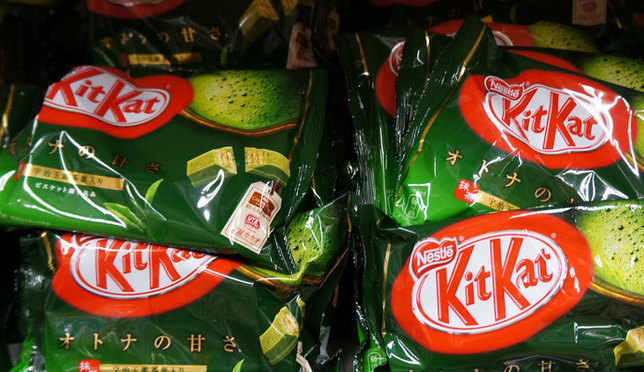

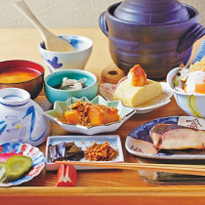
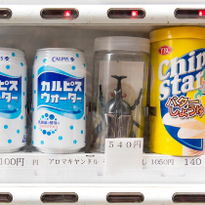





NEW COMMENT | 0 COMMENTS
Open a DiGJAPAN!
account to comment.
Open a DiGJAPAN! Account